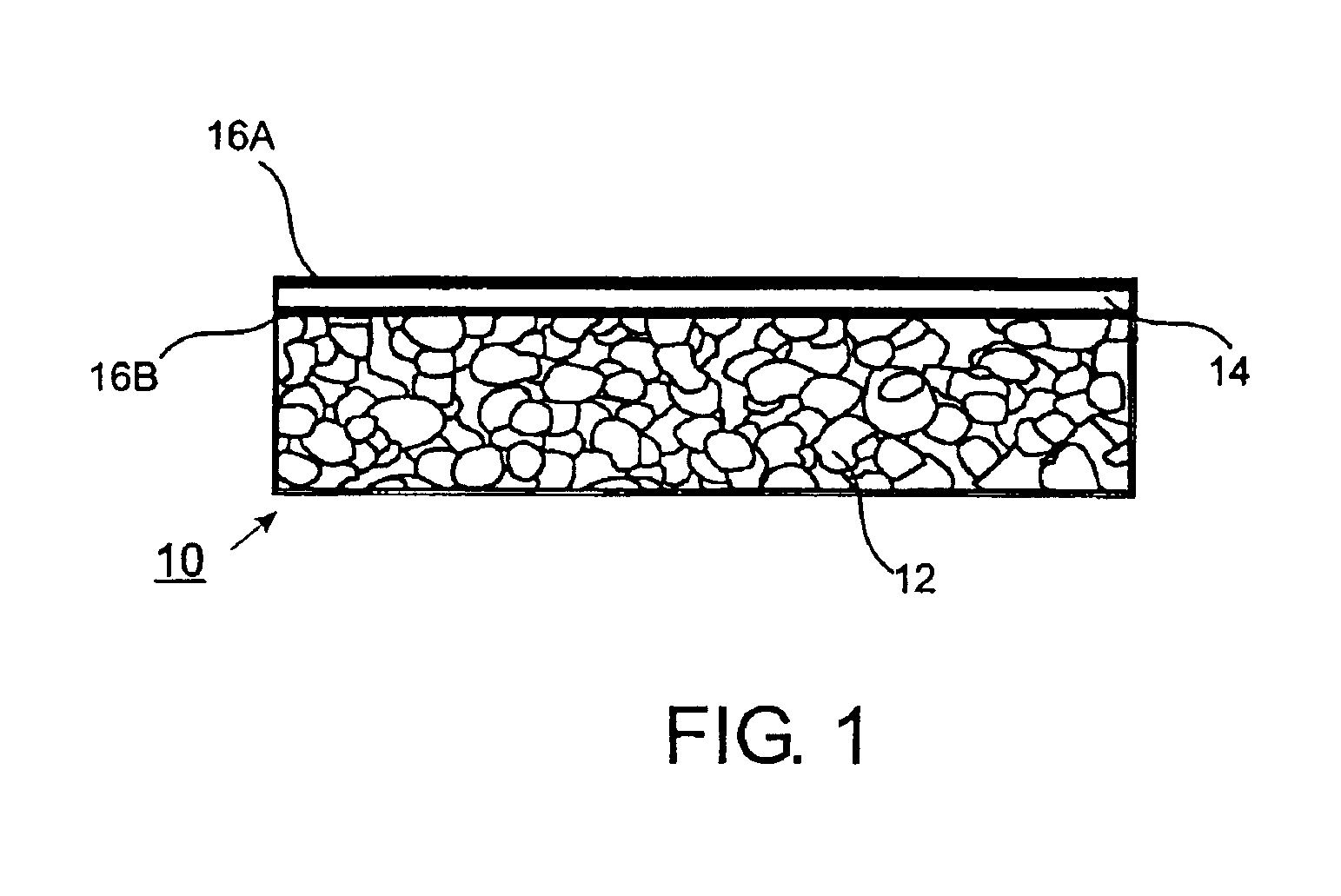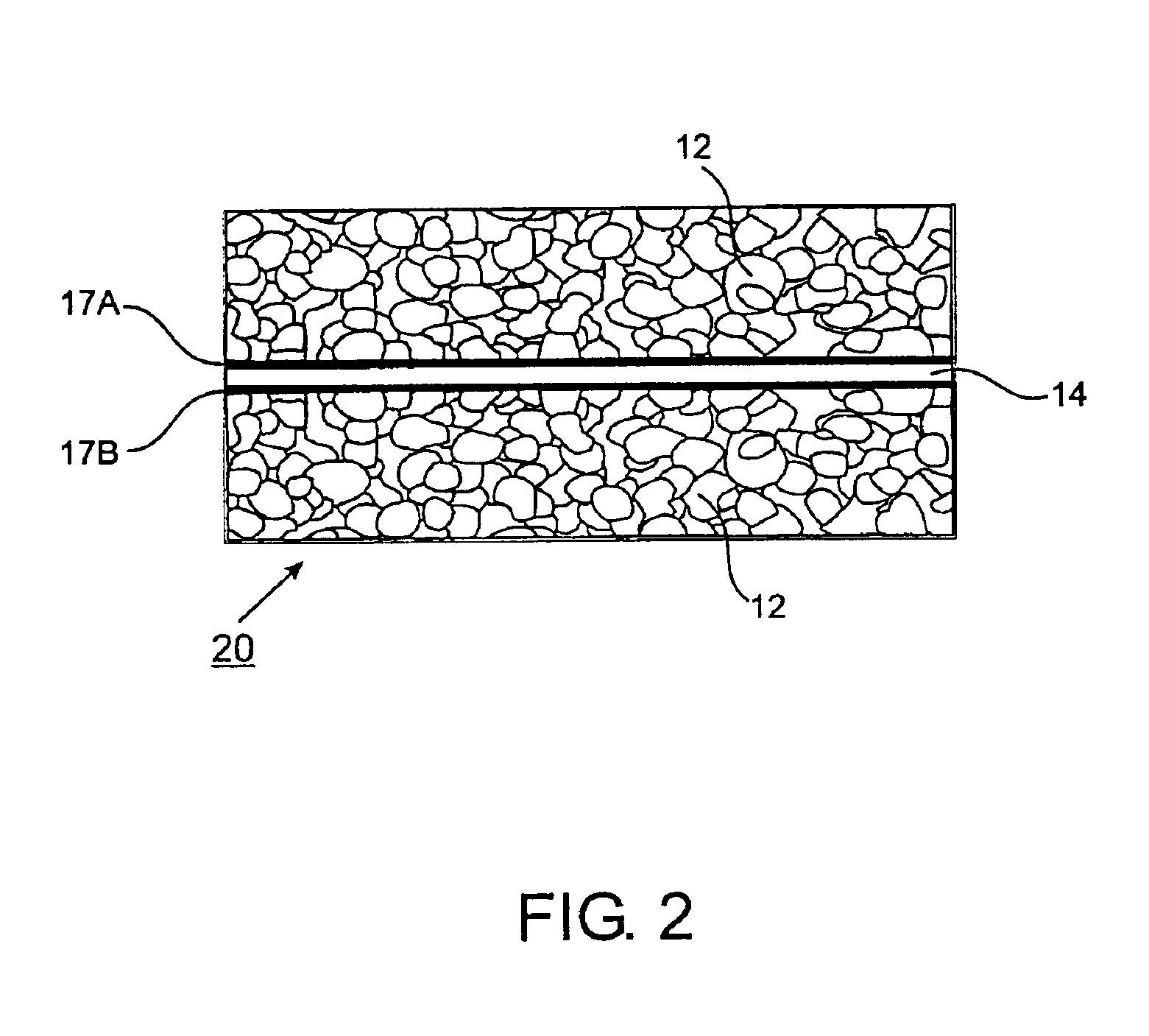Hydrogen transport membranes
a hydrogen transport and membrane technology, applied in the direction of metal/metal-oxide/metal-hydroxide catalysts, chemical/physical/physical-chemical stationary reactors, chemical/physical/physical-chemical production, etc., can solve the problems of poor permeability and the expense of using these materials, and achieve the effect of enhancing the hydrogen transport ra
- Summary
- Abstract
- Description
- Claims
- Application Information
AI Technical Summary
Benefits of technology
Problems solved by technology
Method used
Image
Examples
examples
[0171]V-Alumina Cermets. Fine powders of vanadium and alumina are mixed, pressed and sintered to form dense cermets, which are highly impermeable to gases other than hydrogen. Sintering is performed in a vacuum furnace at pressures of approximately 10 E-4 torr in order to minimize oxidation of the vanadium powder. Getters for oxygen, including Al, Mg and Zr, can also be added to the powder mixture. After sintering, material is mechanically removed from both sides of the membrane to expose fresh surfaces of vanadium. Palladium is deposited onto both sides of the membrane by sputtering. The palladium acts as a catalyst for dissociation of molecular hydrogen and also protects the vanadium from oxidation and formation of carbides and nitrides. In variations, the palladium may be deposited by evaporation, chemical vapor deposition, slurry-coating, or electroless deposition. In further variations, the catalyst may be Pt, Ir, Ni, Co, Fe, Mo, W, Rh, Cu, Ag, or compounds or alloys thereof, a...
PUM
| Property | Measurement | Unit |
|---|---|---|
| Percent by volume | aaaaa | aaaaa |
| Glass transition temperature | aaaaa | aaaaa |
| Bond energy | aaaaa | aaaaa |
Abstract
Description
Claims
Application Information
 Login to View More
Login to View More - R&D
- Intellectual Property
- Life Sciences
- Materials
- Tech Scout
- Unparalleled Data Quality
- Higher Quality Content
- 60% Fewer Hallucinations
Browse by: Latest US Patents, China's latest patents, Technical Efficacy Thesaurus, Application Domain, Technology Topic, Popular Technical Reports.
© 2025 PatSnap. All rights reserved.Legal|Privacy policy|Modern Slavery Act Transparency Statement|Sitemap|About US| Contact US: help@patsnap.com



